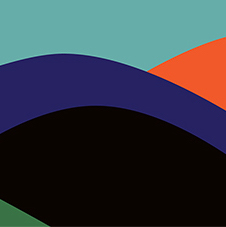O Autumn, laden with fruit, and stain’d
With the blood of the grape, pass not, but sit
Beneath my shady roof; there thou may’st rest,
And tune thy jolly voice to my fresh pipe,
And all the daughters of the year shall dance!
Sing now the lusty song of fruits and flowers.
The narrow bud opens her beauties to
The sun, and love runs in her thrilling veins;
Blossoms hang round the brows of Morning, and
Flourish down the bright cheek of modest Eve,
Till clust’ring Summer breaks forth into singing,
And feather’d clouds strew flowers round her head.
The spirits of the air live in the smells
Of fruit; and Joy, with pinions light, roves round
The gardens, or sits singing in the trees.”
Thus sang the jolly Autumn as he sat,
Then rose, girded himself, and o’er the bleak
Hills fled from our sight; but left his golden load.
William Blake (1757-1827) was a British poet, painter, and engraver who lived and worked in London. His parents encouraged his art from a young age, but as that schooling became more expensive, he was then apprenticed to a master engraver. He spent a lot of time drawing Westminster Abbey and the gothic architecture and tombs affected Blake’s romantic sensibilities and imagination. In the early 1780’s Blake became acquainted with a “celebrated lady of fashion,” Harriet Matthew, whose home was a favorite meeting place for artists and musicians—this is where Blake began to recite his poetry and led to the publication of his first volume, Poetical Sketches, in which “To Autumn” was published (though only 50 copies were known to be in print).
“To Autumn” is one in a set of four season poems by Blake, aptly including “To Winter,” “To Spring,” and “To Summer.” These seasonal invocations can be read alone, but Blake also intended them to interconnect. The cycle of the seasons is often interpreted as the cycle of rebirth and death, themes that apply to human nature as well. Each of the season songs can be read as Blake’s reference to the different stages of human life. “To Autumn” is not a particularly personal poem, but is significant in that it, along with the other seasonal songs, seems to correlate mythology that Blake created. The personas of the seasons can be read as counterparts to Blake’s spirits: Tharmas (most like spring), Orc (most like summer), Los (most like autumn), and Urizen (most like winter). Thus, “To Autumn” can be read as a particular view of human nature, or in a way which relates more to Blake’s later works.

